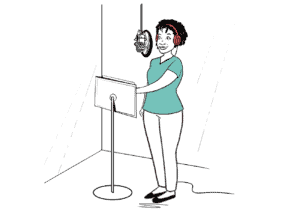

Have you ever watched a Wernor Hertzog documentary? If you have then you know, along with the power of nature, the toilsome striving of humanity, and nice heaping doses of existential dread, Hertzog’s gruff, heavily-accented voice is layered over the top of it all. It makes you tremble with its dulcet wisdom, and laugh sometimes at the melodramatic cadence as you stare into an active volcano, or watch a man commune with grizzly bears.
Thus, the impact of voice-over. It can take the content, with all of its humor or severity, and elevate it. The right voice can lend a sympathetic quality, or strike you with authority. It can make you laugh, or have you nodding along as it breaks things down for you.
In the wonderful world of whiteboard animation, voice-over might be even more important. The charming simplicity of the form relies on a rhythmic, professional narration to tie the content together. It’s a central ingredient in the explainer animation cocktail.
But what makes it so effective? It turns out there’s actually some solid science behind the effect of a charismatic voice-over. A brilliant psychologist named Allan Paivio came up with an idea called the dual coding theory back in the 70s. The idea in a nutshell is that we humans collect information along two channels: visual, and aural. By combining the two, we can double our chances at retaining information, letting us recall both the image of a thing, and the way it sounds in our mind. A great voiceover makes your content sticky. It accompanies catchy images to give a viewer’s brain its best chance at remembering what they’re learning.
So when your ideas are being sketched on that pristine surface, a good voice-over is giving them the edge they need, while keeping your audience rapt and engaged. Whether it’s Wernor Hertzog, or our excellent squad of talented narrators, the audience can’t help but be transported into your world, and left thinking about your content long after the credits roll.


